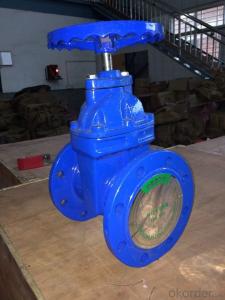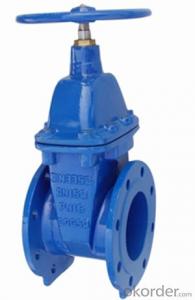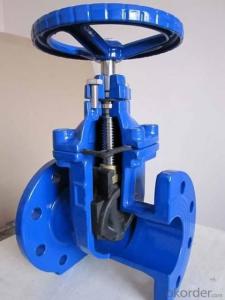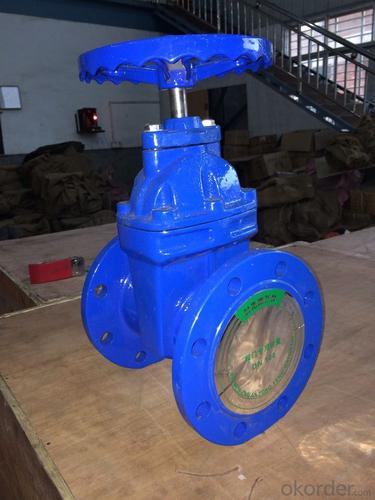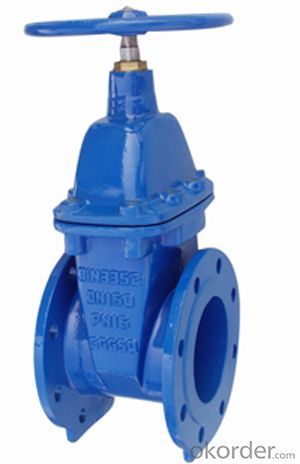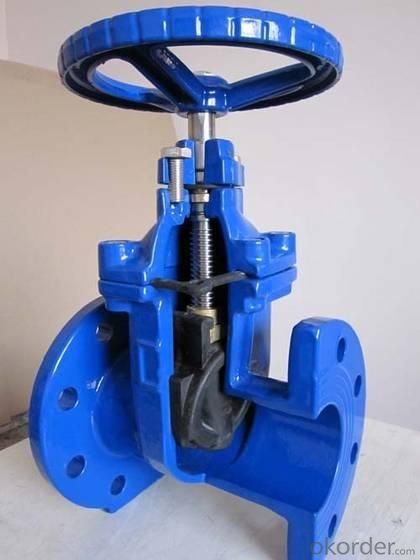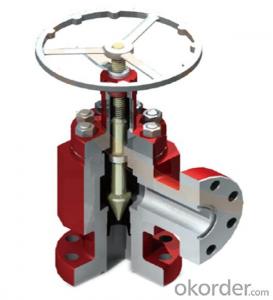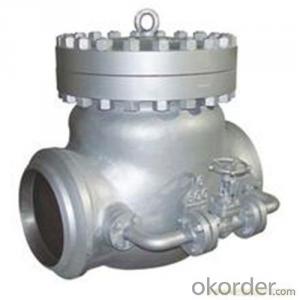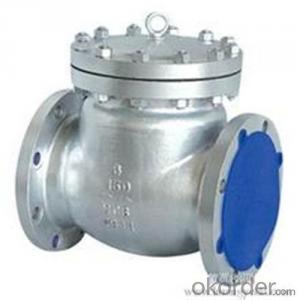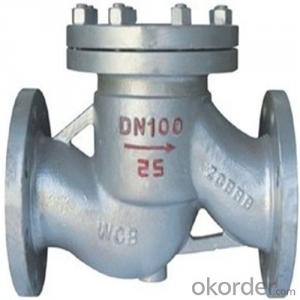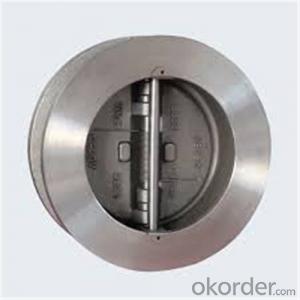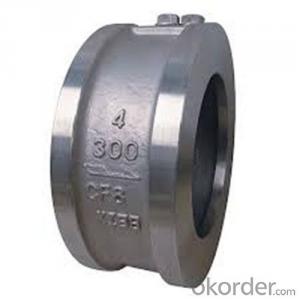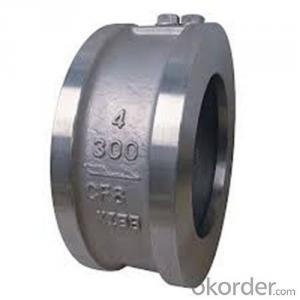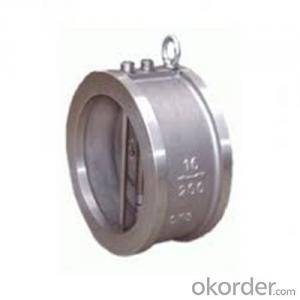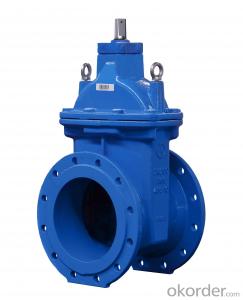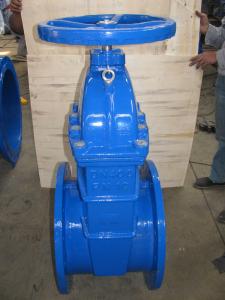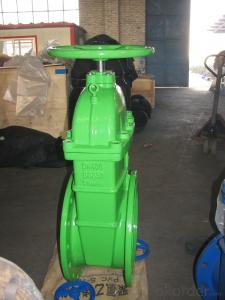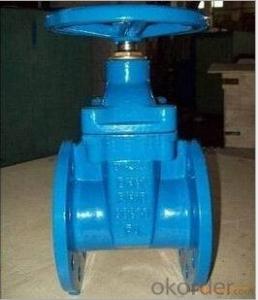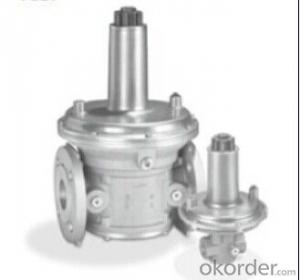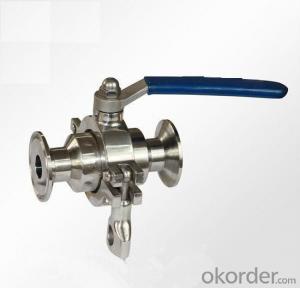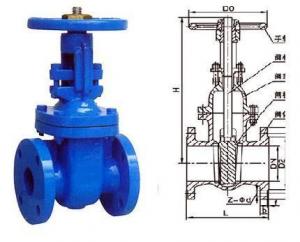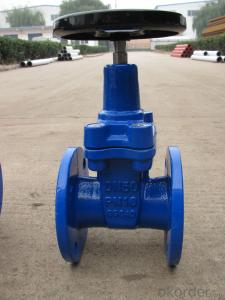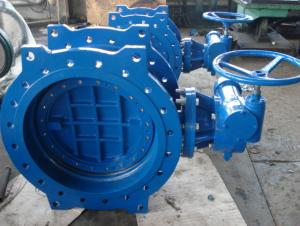Non-rising Stem Resilient Seated Gate Valves Made of Metal
- Loading Port:
- Tianjin
- Payment Terms:
- TT OR LC
- Min Order Qty:
- 100 unit
- Supply Capability:
- 100000 unit/month
OKorder Service Pledge
OKorder Financial Service
You Might Also Like
Non-rising resilient seated gate valves solve the problem in general gate valves such as leakage, rusting etc. and saves installation space. It is used widely in tap water industry, sewage treatment, shipping construction, petroleum, chemicals, food, pharmacy, textile, electric power, metallurgy and energy system's pipeline to adjust and shut off fluids.
l Replaceable O-ring
l Low torque operation
l Rubber encapsulated wedge
l Clockwise closing direction
l Fusion bonded epoxy coated inside and outside
Specification
Body materials: Ductile Iron/Metal
Design standard: DIN3352 F5/F4, according to requirements
Design pressure: PN10/PN16/PN25
Size: DN80mm-DN2000
Connect type: Flanged gate valve
Seal type: Resilient seated gate valve, EPDM+ Ductile Iron
Coating:
Fusion bonded epoxy coated both on the interior as well as the exterior surfaces of the valve, flange surfaces are also fully epoxy coated, blue color.
Application
Potable water, neutral liquids, irrigation, heating and chilled water, fire systems etc, in either above ground or buried service applications and requires minimal maintenance
Feature
This Ductile Iron Resilient Seated Gate Valve is fully compliant to DIN3352 F4. We have light weight type, heavy weight type and even middle weight type for your reference, and these three options design construction of ductile iron will offer a robust and durable extended life performance.
1- Bolted bonnet, full bore: used for larger valves and higher pressure applications.
2- Stem sealed with O-rings: realize zero leakage, could be replace under full pressure.
3- Rubber encapsulated wedge: excellent elastic memory, ensure sealing effect.
4- Blue fusion boned epoxy coated inside and outside: suitable for portable water.
5- Working pressure from -1 to +16 and working temperature from -10 to +80°C
Durable
This valve is suitable for use in a wide range of applications including potable water, neutral liquids, irrigation, heating and chilled water, fire systems etc, in either above ground or buried service applications and requires minimal maintenance. This Resilient Seated Gate Valves have a rated working pressure of 16 Bar. The valves seal 100% leak tight. The waterway is clear, unobstructed and free from pockets. Resilient seated gate valves are fusion bonded epoxy coated both on the interior as well as the exterior surfaces of the valve, flange surfaces are also fully epoxy coated.
Advantages
1- OEM Factory : Professional manufacturer, clients from whole world.
2- High Quality, Competitive Price: Custom is accepted.
3- Complete Service: Long service Life, Fast delivery, Multilingual services.
4- Certificates: ISO9001, CE, NSF, TS, WRAS.
5- Low MOQ: Ready for providing the sample and producing some small orders.
FAQ
Q: Do you produce valves with PN40?
A: Yes, but for PN40, we suggest materials of metal, like cast steel, stainless steel…etc. We could also produce ductile iron valves with PN40.
Q: Are you manufacturer or trading company? Which kind of valves do you supply?
A: We are a professional manufacturer of butterfly valves, check valve, non-return valves, gate valves, Y-strainer and so on.
Q: Will you do inspection before shipment? Whether Third Party Inspection is available?
A: We have a professional engineer team, so we can offer you the most professional technical support. All valves are tested twice before and after hammer pin to ensure its perfect sealing property and to make sure every valve is ok before ex-factory. TPI is ok but the clients should bear all fees.
Q: What kind of package do you use for these valves?
A: Valves from DN80-DN1400 will be packed in wooden boxes, but valves above DN1400 will be in wooden pallets. If you need wooden boxes for above DN1400, the price may be more expensive.
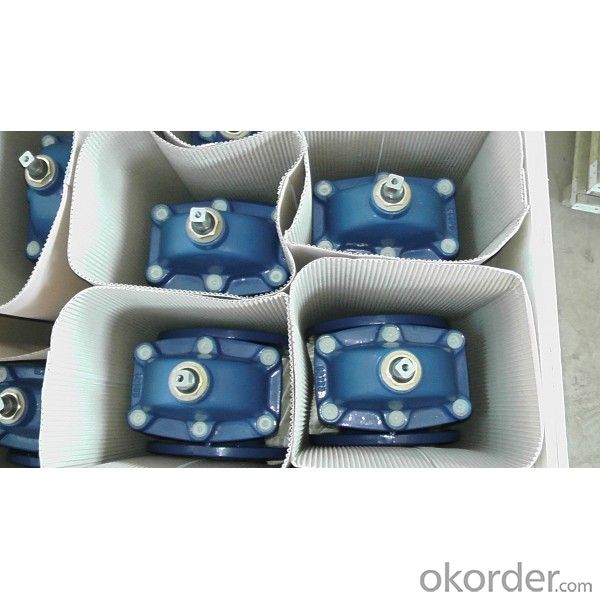
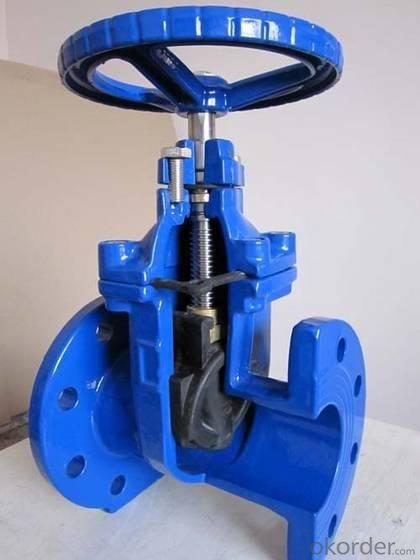
- Q: Can you please explain to me what an atrial valve is and what it does??
- By atrial valve, I assume it meant the atrioventricular valves. Basically, in the heart, the blood flows from right atrium, right ventricle, left atrium, left ventricle. The atrioventricular valves are the tricuspid and bicuspid valves. They make sure the blood flows from the right atrium - right ventricle and left atrium - left ventricle respectively and prevents blood from flowing the wrong way in those chambers.
- Q: where is the bleed valve in a 97 taurus????thank you
- Which okorder put in your car facts and go to repair
- Q: I need a bit of help. I am trying to find the location of the EGR Valve on a 1992 Chevy Cavalier 2.2L. If anyone can help me out by posting back a picture or diagram that would be great. I found all the text directions, but did not find that to be helpful.Thanks,
- Egr Valve Location
- Q: large veins contain one way valves, which keep the blood flowing in one direction. why dont large arteries need similar valves?
- The aorta and the pulmonary artery both start at valves from the heart, but I don't know if you could say they have valves. A lot of arterial flow is regulated by smooth muscles which constrict to direct flow to other areas. These are a kind of valve too.
- Q: My 10 year old boy was diagnosed with a leaking heart valve yesterday.The Doctor is trying to get him in to see a specialist asap.She didn't seem that concerned with it,but I don't know if she was just trying to keep us calm about it.How serious is this,and is surgery the only way to fix it,or do they have meds for this condition.
- People with leaking heart valves usually see a cardiologist, who is a heart specialist. What they usually do is what is called an ECHO, which is a type of ultrasound of the heart. This can tell how bad the leak is.You have valves in each side of your heart, they function to help your blood flow correctly through your heart when it beats. If the heart valve is not leaking a lot, they usually monitor it with repeat ECHO's. If the leaking is such that you get short of breath, tire easily or other such things, they may recommend surgery. This is usually the only option, there is not medication that can fix the problem. If surgery is needed they will replace the valve. If surgery is needed the cardiologist will refer you to a cardiac surgeon. Ask questions. You need to see a specialist and then they can better explain all of this for you. Be heart healthy.
- Q: okay so i recently brought a trumpet and the valve keys were getting stuck. i used the valve oil and it worked. but then when i put the valve key back in and tried blowing through no sound came out. i think it's because i didnt put it back in right. now my question is how do i put it in right? i tried everything but it's still not making a sound. thanks,
- The first thing you should check is the order of the valves. take them all out and look on the sides of them for a number. One should have a 1 on it, another will have a 3 and the other one will probably be unmarked but that's obviously the one in the middle. On the outside of your trumpet there will be a 1 and a 3. The valve with the 1 on it goes in the slot that has a 1 on the outside, etc. Make sure you put these in right. if it's still not playing after you put the valves in and they're secured, twist the tops of the valves where the pearls are clockwise until they don't turn anymore. This should fix your problem.
- Q: i dont get how valves produce the sound? and why did we change to solid state? was that because they we're used in stereos?
- Most valve amps I have used reproduce the sound of a tube amp. Tubes have a warm sound and can be overdriven to get that good rock crunch distortion sound. We went to solid state because they were durable and didn't require the maintenance of a tube amp. Printed circuits and transistors cut the cost of manufacturing. The old tube amps still have the purpose and they never quite matched the exact sound of tubes with the solid state amps. That is why they are making a lot of tube amps now.
- Q: I'm thinking about getting a Cold air intake along with a Bypass Valve to prevent Water Indigestion on my Toyota Corolla 07. I was wondering if Bypass Valves actually work and can someone explain to me the physics around it???( How bypass valves work)
- The AEM Bypass Valve protects the engine from ingesting water and hydro-locking if the filter becomes submerged in water. Hydro locking occurs when the end of the inlet pipe is submerged in water and the water is sucked into the engine. Driving the vehicle in rainy conditions is not enough to cause a problem unless the vehicle submerges enough that the inlet end of the pipe is immersed in water. Rain impingement on the filter will not cause a hydro lock condition. The distance of the filter from the road dictates the level of water that can cause damage. This distance varies with the vehicle ride height, which is why there are no published numbers for this measurement. We suggest taking this measurement and keeping it in a log book, so that in the event you encounter deep water you will know what your maximum allowable depth is before potential submersion of the inlet pipe. All AEM Cold Air Intake installations retain the factory splash shield (fender liner) for filter protection and performance. Removal of splash shield actually deteriorates performance by allowing air heated by the pavement to enter the filter and negates any positive pressure created in the air filter area when the vehicle is in motion. There are some instances where there is not enough room around the inlet pipe for adequate clearance of an Air Bypass Valve. In these instances, we recommend installing a Short Ram system if water ingestion is a concern.
- Q: So I just got mu egr valve on my car replaced a year ago. Now it needs replacing again!? why might this be? shouldnt it last longer?
- Everything happens for a reason.
- Q: as we are strating centrifugal pump with discharge valve close and can not start positive displacement comp. with disch. valve closed
- No, with no discharge flow, there's no suction flow the compressor will immediatley go into surge. However, if a Low-Flow recycle control is installed, upstream of the discharge valve (which should recycle back to the suction drum to prevent heat build-up), then the compressor will operate without surging and without lifting the discharge safety valve but the condition should be corrected ASAP. (A Centrifugal Compressor will normally be fitted with a Low flow recycle system taken off from the aftercooler discharge line for use during start-up but, if a sudden low flow condition occurs and the recycle doesn't have time to activate, a Low Flow alarm and trip system will shut down the machine). Also, starting a centrifugal pump against a closed discharge is quite common practice as long as it too has a low flow protection recycle back to the suction vessel. This Low flow recycle is common where the discharge has a liquid level or flow control valve installed and may close down during normal operation. This valve would be operating as a 'Split System' controller in conjunction with the Low-Flow recycle control valve. PD pumps without discharge pressure safety protection should NEVER be started against a closed discharge, the hydraulic pressure build up will be instantaneous with possible disastrous results or stalling of the pump.
Send your message to us
Non-rising Stem Resilient Seated Gate Valves Made of Metal
- Loading Port:
- Tianjin
- Payment Terms:
- TT OR LC
- Min Order Qty:
- 100 unit
- Supply Capability:
- 100000 unit/month
OKorder Service Pledge
OKorder Financial Service
Similar products
Hot products
Hot Searches
Related keywords
